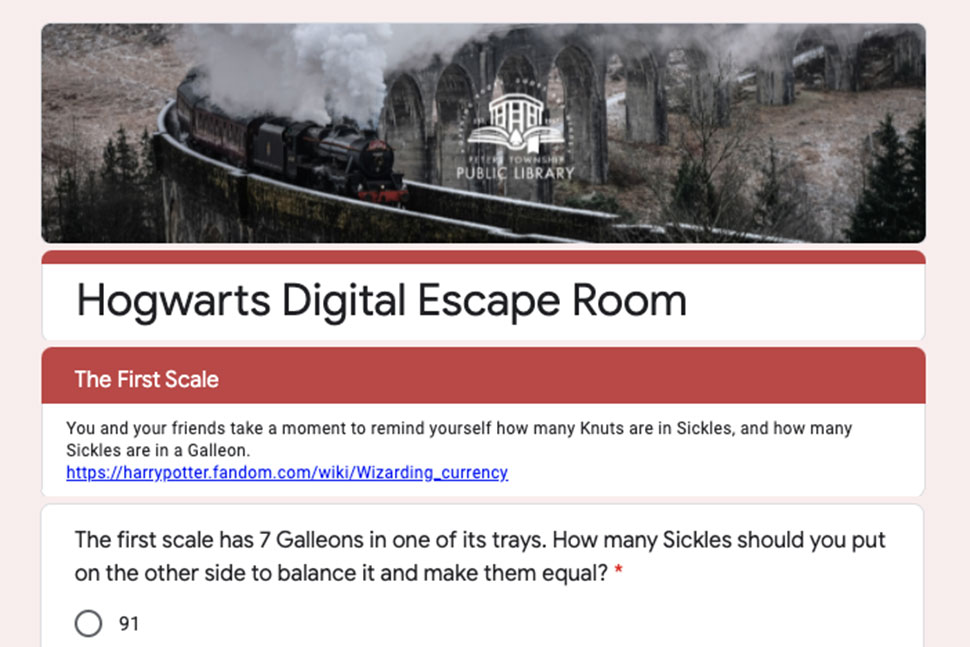
On March 12, because of the COVID-19 pandemic, the Coeur d’Alene (Idaho) Public Library (CDAPL) canceled its in-house programming. By March 13, Young Adult Coordinator Angela Flock and Youth Services Coordinator Mandi Harris had a plan for moving some of that programming online.
Why the urgency? “Sure, we want to increase literacy and provide fun events,” says Flock. “But I was more concerned about my teens’ mental health. Social interaction is super-important for a teen’s development. Also, for some of them, the library is a safe place away from the issues that they may be having at home. I wanted to continue giving them as much of that experience as possible.”
CDAPL is just one of many libraries that has altered programming plans—for children, teens, and adults—because of COVID-19. Some libraries are figuring out how to digitize as many programs as possible. Others are taking the virus into account when planning future activities. Still others find themselves pondering how the pandemic may permanently change the nature of library programming.
Since Flock’s library canceled its in-person programming (before shutting its doors to the public entirely), she has moved two of its weekly teen clubs online: a Dungeons and Dragons group and a videogame club. Thanks to her work with teens, she knew that most of them already used Discord, a chat-based communication platform.
“Discord gives you the ability to make a server, which is like a little private island that you can invite people to,” she explains. “Within the server, the creator can give people roles and create limits and boundaries, while also creating text and voice chat channels. It’s ideal for small-group discussion as well as text-based sharing with more privacy than many other social media platforms can provide.”
Since creating a Discord server and inviting her teen regulars to join it, Flock has seen about four of them participate in the virtual Dungeons and Dragons group and another four in the videogame group. She expects that as Idaho’s 21-day stay-home order (issued March 25) continues and word of the Discord server spreads, those participation numbers will increase, perhaps approaching the 10–15 that her previous, in-person sessions garnered.
Digital escape rooms
The March 14 closure of Peters Township (Penn.) Public Library meant that Youth Services Librarian Sydney Krawiec didn’t get to hold the escape room event that she’d planned for that day. So instead, she used Google Forms to create a digital escape room with a Harry Potter theme. Since she posted a link to it on the library’s teen Facebook page, it has received more than 150,000 hits from users around the world.
“In the first two days, I was getting about 30 emails a day, wanting to know if it was okay to share it with other people,” she says. “Like: ‘We want to save it and do it for our daughter’s birthday party this weekend, so she can do it on Zoom with her friends.’ A soccer organization said they were going to do it over a conference call for a team-building activity. A police department talked about how they can adapt a Google form for online training. It blows my mind.”
Krawiec, who emphasizes that she did not invent the notion of a digital escape room, attributes the popularity of hers to its Harry Potter theme and to the fact that so many families need at-home activities. She says it took about four hours to create and beta test. Many libraries have asked her to share her process that, with the help of the Pennsylvania Library Association, she’s created an explanatory YouTube video.
Krawiec sees digital escape rooms as a way for libraries to involve patrons at home in an active way. “I know we’re all doing [online] storytimes, and stories are great,” she says. “I wanted to offer something a little more interactive that could be completed together.”
Success in smaller numbers
At the Calvin S. Smith branch of Salt Lake County (Utah) Library, which closed to the public March 13, Youth Services Librarian Melodie Kraft Ashley is thinking ahead to the summer reading season and the many library-led craft projects that usually go along with it. Since it’s uncertain when the library will re-open, Ashley is making those projects into kits that participants will be able to pick up and take home if necessary. For example, to emphasize the branch’s summer reading theme of “Imagine Your Story,” Ashley is making “story sacks”—paper bags containing small blank books along with small random household items that will act as story prompts.
This approach may come in handy even after the branch reopens, Ashley points out, since concerns about the safety of large groups may continue for some time. Having projects for patrons to take home, “rather than having one huge program with high attendance,” she says, will allow the library to limit the number of patrons in one place.
Similar concerns are on the mind of Bob Abbey, adult services librarian at Forest Grove (Oreg.) City Library (FGCL). Before the pandemic, FGCL hosted an array of adult programming, including Memory Cafes, author readings, musical performances, and even a baking demonstration that drew nearly 50 attendees. While the library is closed, Abbey is focusing on maintaining a healthy social media presence and on heightening community awareness of library resources.
And when the library reopens, he says, its programming will probably look different than before: “The days of packing a lot of people into a room are probably, at least for the foreseeable future, over.” In a typical FGCL adult program, “people aren’t sitting shoulder to shoulder, but they are sitting close to each other,” he adds. “And what I’ve found is that when you provide an opportunity to have seats spread out, people like moving chairs together. They want to be part of a close-knit group.”
Post-pandemic, in order to provide an opportunity for patrons to come together while still ensuring public safety, libraries may have to consider limiting program attendance—and redefining a program’s success.
“We tend to focus a lot on getting people in the door, because that’s something we can measure,” Abbey points out. “‘Oh, we had 40 people; that was a success.’ But I think we’re going to have to start shifting our focus away from numbers and focus more on the quality of the experience. If we have to limit attendance to 15 or 20 people, are those 15 or 20 people having a really great experience?”


